

Table of contents
- Gabion stones in detail
- stone size
- filling quantities
- round gabions
More and more people are looking for an alternative to the classic wooden fence and are becoming aware of gabion fences. These are wire cages in different sizes and shapes that are filled with gabion stones and thus look like an elegant stone wall. Property owners and gardeners who decide to use gabion stones should pay attention to the appropriate stone size and their filling quantities.
Gabion stones in detail
Gabion stones are easy-to-erect stone wall variants that can be erected and filled without any problems even without knowledge of wall construction. The fences consist of a wire basket that is filled with broken stones of various grain sizes, giving the impression of a wall. Not only quarry stones are used here, but also gravel, which is quite coarse-grained and can therefore be used for the gabions without any problems. The following stones are excellent and have established themselves as filling material:
- granite
- dolomite
- sandstone
- quartz
- basalt
- limestone
- greywacke
- decorative gravel
- Glass chunks (no rock, but often used for gabions)
- Marble
- sugar stone
- shell limestone
Because of this variety, it is necessary to know how to calculate general filling quantities for gabion fences, as each stone has a different density and even fracture shape. You cannot order the same amount of marble as basalt as the two rocks are fundamentally different differ and it could easily happen that you receive too much or too little. This should be avoided at all costs, otherwise you will incur unnecessary costs. The difference between the various gabion stones becomes even clearer when you choose a specific one shape, for example very flat or roughly chipped stones with clearly visible ones Edge.
Tip:
Before choosing the stones, you should find out in which colors they can be supplied. You may like a rose quartz in soft pink tones more than typical greywacke stones, which is important for the project in question.
stone size

The right size of the gabion stones is crucial for the necessary order quantity, as this determines how close together the stones are in the wire baskets. In addition, the size is important so that the stones do not simply fall out of the holes in the gabion cages as soon as they are filled. This requires the dimensions of the respective mesh size, which you should look up when buying the cages to find out the necessary stone size. The mesh size describes the distance between the wires. Typical mesh sizes are:
- 50x50mm
- 50x100mm
- 50x200mm
- 100x100mm
But there are other mesh sizes, ranging from small 30 x 60 mm to large 150 x 350 mm, which also affect the size of the stones. The stone size is measured based on the mesh size. For a gabion fence with a mesh size of 50 x 100 mm, you should choose stones whose grain size corresponds at least to the shortest size of the mesh. In this case, it would be gabion stones that have a grain size of 50 - 120 mm, for example, and cannot fall out during filling. However, the size can be influenced by the fineness of the grain:
- Coarse stones: usually larger, are further apart, as the edges are more misshapen, fewer stones are needed
- fine stones: lie close together thanks to smoother edges, shape of the stones is consistently similar, more stones are needed
You also have to make sure that the size of the stones is usually done using a sieve. This means that the size given is only a guide, as natural stones are not identical in size unless they are worked. The following problems can occur here:
- Length, width or density of some stones do not match
- these can either not be used at all or only after repeated attempts
- often fall out
- In extreme cases, they cannot even fit into the fence

This problem does not occur with worked stones that are uniform in shape. These can easily be stacked in the gabion baskets, but they don't look as natural as the other stones. An example of this would be paving stones, even if they are used less frequently for gabions.
Tip:
If you no longer know what the mesh size of your gabion fence is, you can simply measure it with a tape measure or ruler.
filling quantities
After you have decided on the right size of the stones, you must then calculate the filling quantity. This information is important so that you have enough stones available to fill your gabions and the optimal filling quantity saves you time and money. The following quantities are required for the calculation:
- Height of the gabions in meters
- Width of the gabions in meters
- Length of the gabions in meters
- Weight of stones per cubic meter (m³) in tons
Many people have problems with this because they do not know how much the individual stones weigh. This information is easier to find than you think, because each manufacturer has to specify the corresponding weight per cubic meter for the specific gabion stones. For example, a cubic meter of 60 – 300 mm basalt weighs 1.5 tons per cubic meter, while a cubic meter of Jura chunks 45 – 56 mm weighs 1.4 tons. While this looks like a small difference, it is crucial for the calculation. The formula is as follows:
- Length x height x width x weight = result in tons
That is, if you have a gabion fence measuring 10m x 2m x 1m and the Jura mentioned above If you use chunks, you have to fill 20 m³ of fence, which corresponds to a filling quantity of a whopping 28 tons. You spend between 1,200 and 1,500 euros for Jura chunks in this quantity. Please make sure that, despite this exact calculation, you always order about 20 percent more stones, as some may be damaged over transportation or due to their shape not complete the fence fill out. It can also happen that more stones are needed to fill corner joints. This is typical of this form of filling and it is therefore important not to forget this point.

The calculation looks like this:
- Result in tons + 20% = final filling quantity
With a quantity of 28 tons, 20 percent corresponds to 5.6 tons and you end up with a filling quantity of 33.6 tons. Delivery costs vary depending on the retailer.
Tip:
If you have problems with the percentage calculation, you can simply divide the result in tons by 5. The result is 20 percent.
round gabions
When calculating the filling quantity for round gabion fences, it can often be a little more difficult. Since this is not a cuboid but a cylinder, the filling quantity must be calculated accordingly. Thanks to the circle number Pi (=3.14159...) round basic shapes can also be easily calculated. If you have decided on a gabion fence with a base area that corresponds to a circle, you will need the following values to calculate the volume of the room:
- radius of the circle
- height of the fence
The formula is as follows
- Circle number Pi x radius² x height = volume

With a circular gabion fence with a height of two meters and a radius of one meter, you have a volume of 6.3 cubic meters. Now you have to calculate this value together with the specific density of the stones per ton, i.e.:
- Volume x weight = capacity
If you take the Jura chunks 45 – 56 mm mentioned above, which weigh 1.4 tons per cubic metre, you get a filling quantity of 8.8 tons.
hollow cylinder
However, since not every gabion fence is used as a pure cylinder, but rather as a hollow cylinder, you have to use a different formula for this:
- Volume of Outer Cylinder - Volume of Inner Cylinder = Volume of Hollow Cylinder
With a gabion fence that has an outer radius of two meters, an inner radius of one meter and a height of two meters, you have a volume of 18.8 cubic meters. Then multiply this value by the weight of the stones per ton and you get the filling quantity. With the Jura chunks already mentioned, that would be a filling quantity of 26.3 tons.
Elliptical Cylinder
The third variant is elliptical cylinders, i.e. gabions, which are oval in their basic form and therefore leave even more scope for design.
The formula is:
- Pi x radius of the long side x radius of the short side x height = volume
If the same radii and heights are used as with the hollow cylinder, you get a volume of 13.6 cubic meters. Multiplied by the weight, this gives a capacity of 19 tons.
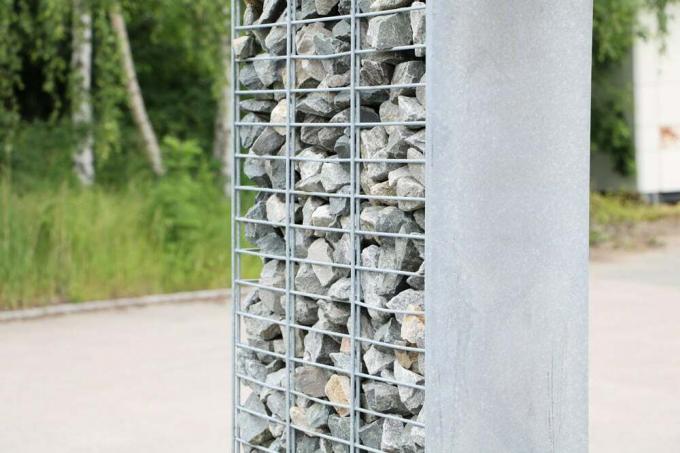
Tip:
Since round gabions are never as accurate as straight variants, you should order between 20 and 25 percent more stones here so that the curves can be balanced.
 garden editorial
garden editorial I write about everything that interests me in my garden.
Learn more about gardening of all kinds
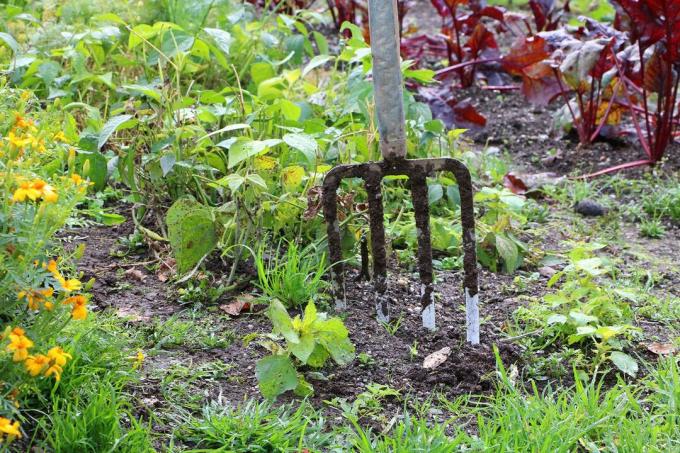
Laying out a garden – you should observe these guidelines
A well-kept garden is a real eye-catcher that enhances the house and property even more. When buying a new property or for seasonal renewal, the garden is designed with many new ideas and concepts. This can be quite expensive if not planned properly. Our article wants to show you how to create your new […]
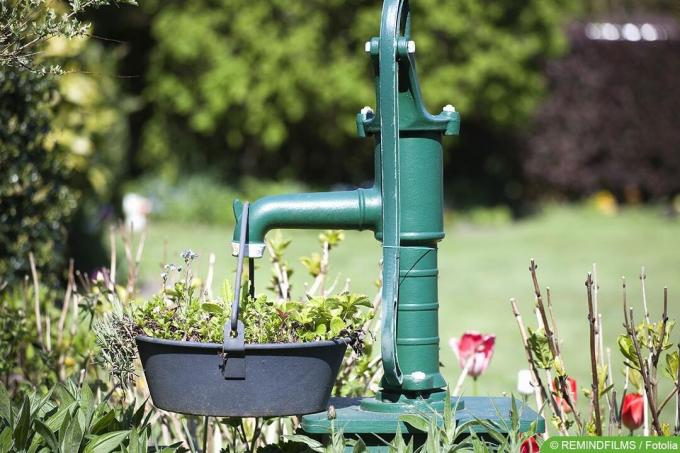
Find water veins: At what depth does groundwater come?
A well on your own property must be connected to the groundwater. It is not always clear where this is located. Luckily, there are several methods that you can use to reliably track down a "water vein" to take advantage of the water source.
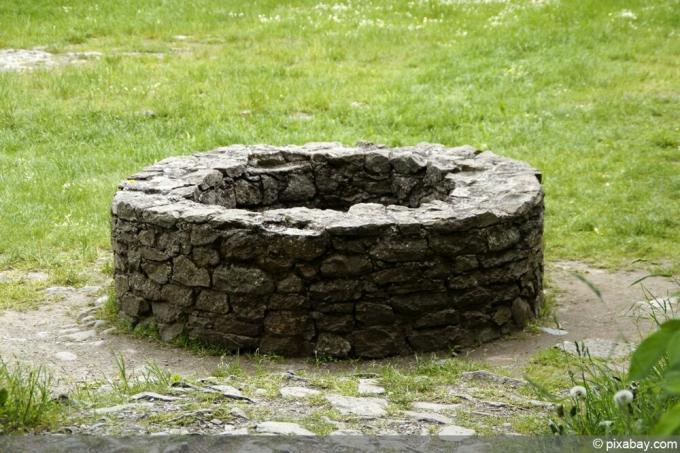
Build your own dowsing rod DIY instructions
Dowsing rods have been a working method for finding water and other things in our environment for centuries. With little effort, you too can easily make your own dowsing rod - with our instructions.
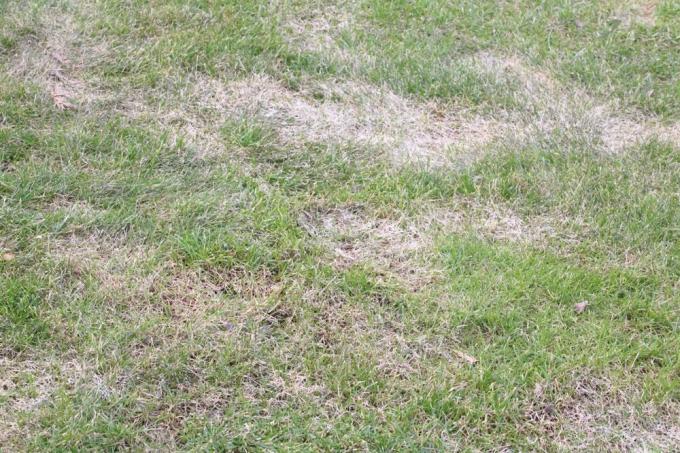
Lawn pavers: how does lawn repair work?
Bald spots or gaps in the lawn are a thorn in the side of many lawn owners. However, overseeding is considered to be tedious work. Relief should Provide lawn pavers that combine many work steps in one.
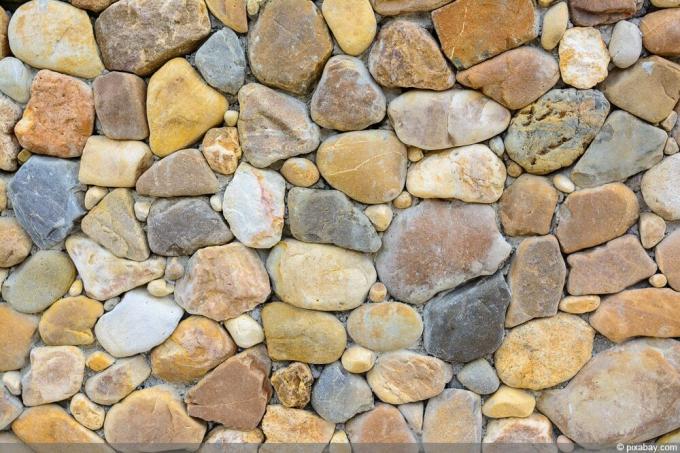
Build a Frisian wall yourself | Costs for a Frisian wall
The Friesenwall is used to separate gardens and flower beds from neighboring properties. It is aesthetic and offers a living space. The costs you will incur depend on the material you have chosen. Choosing DIY will save you money on labor.
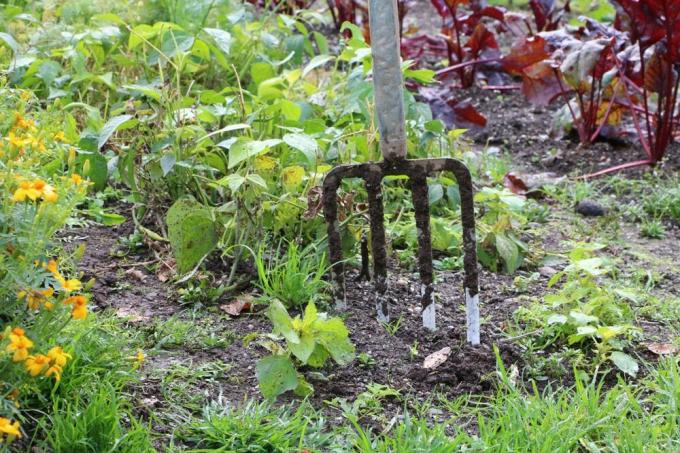
Improve your income with gardening - is that possible?
If you put a lot of time, energy and love into your garden and this then also brings the corresponding successes in the form of a rich harvest shows, you can get the idea of whether you can improve your income with your gardening. We show what you should consider, what pitfalls there are and what opportunities you can offer.



